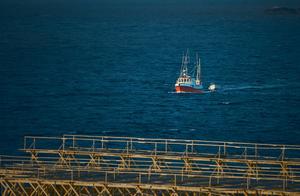Russia and the United States in the Arctic: from Competition to Confrontation
The region is rich in untapped resources, containing a predicted 30% of the world’s natural gas, 13% of its oil, and vast deposits of valuable minerals. Historically, the Arctic Ocean was divided among five Arctic states, who continue to obtain official Arctic status are Russia, the US, Canada, Norway, and Denmark. However, the adoption of the 1982 UN Convention on the Law of the Sea altered these divisions, leading to ongoing disputes over exclusive economic zones and resource rights. International organizations, such as the Arctic Council, aim to mediate these conflicts, but tensions persist.
The US has been an Arctic state since it acquired Alaska in 1867, however the region remained a low priority until the Cold War, when its strategic importance for missile deployment became evident. Following the collapse of the Soviet Union, the American interest in the Arctic diminished, but it reappeared in the 21st century as Russia intensified its activities in the region. The US now perceives Russia’s Arctic activities as a direct challenge, forcing increased military engagement. In response to Russian expansion, the US introduced new military strategies, including the 2007 Cooperative Strategy for 21st Century Seapower and the 2021 "Blue Arctic" strategy. These initiatives aim to maintain naval dominance, promoting international control of Arctic waters against Russian and Chinese interests.
The US highlighted its military presence in the Arctic, conducting joint NATO exercises with the UK, Norway, and Canada. The revival of the US Second Fleet and the establishment of new military bases and surveillance radars in Alaska and Greenland signal a stronger commitment to Arctic security. Russia, in turn, has heavily strengthened its Arctic military capabilities. It established the Northern Fleet as a Joint Strategic Command, deployed advanced air defense systems, and expanded its naval and aviation infrastructure. The Arctic has become a focal point of Russia’s security and economic policy, particularly with its control over the Northern Sea Route, a crucial trade passage.
As both nations increase their military activities, the Arctic transforms into a zone of geopolitical tension. The US seeks to challenge Russia’s strength and cut down China’s Arctic ambitions, while Russia remains determined to validate iits claims. The region’s militarization raises concerns about potential conflicts. However, diplomatic efforts continue, aiming to balance competition with cooperation through Arctic security dialogues to prevent conflicts and maintain regional stability.
